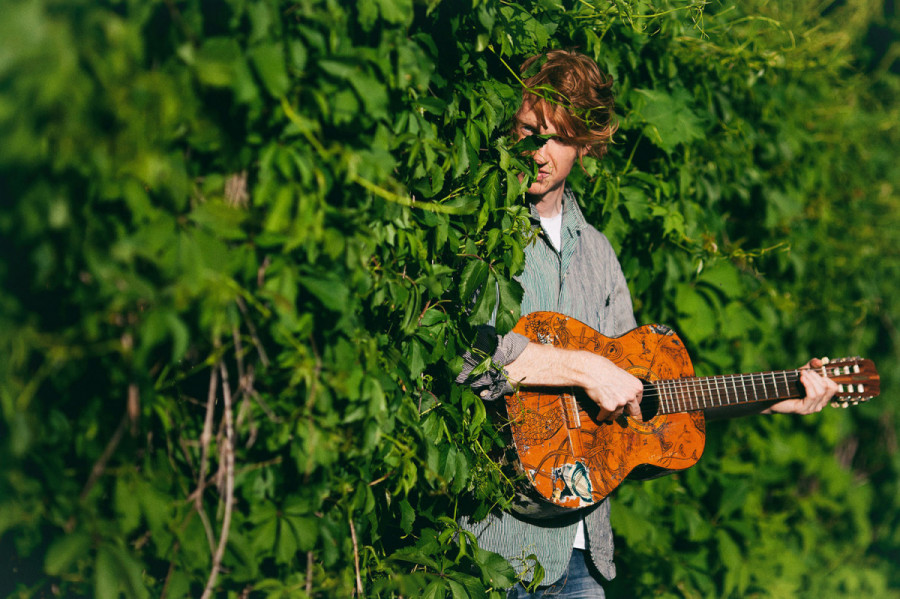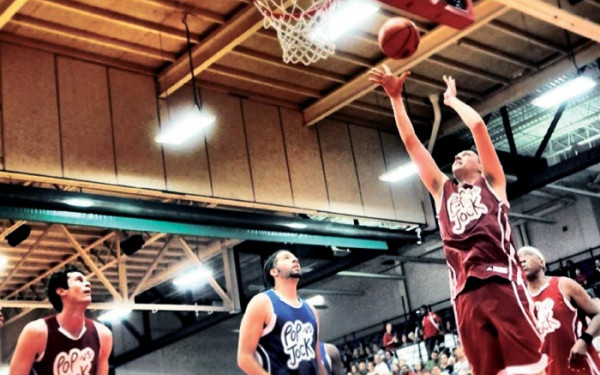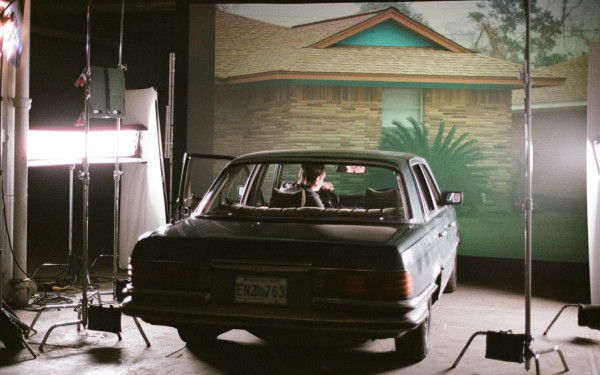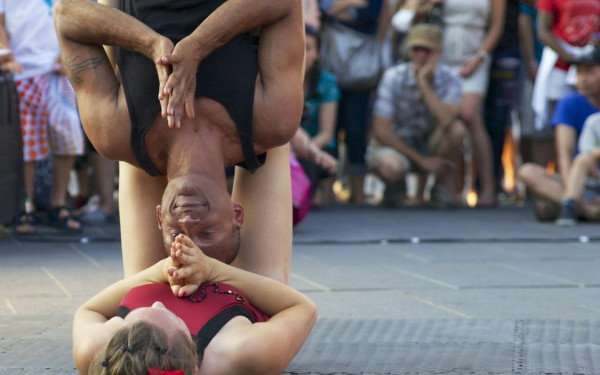Richard Reed Parry Creates a Soothing Universe Through Music and Film at the Jazz Fest
A Concert Where the Space Is Just as Important as the Music
You know when you want to go to a concert, but you’re just not looking forward to standing in line, and being on your feet for hours? Or seeing only half the stage (if you’re lucky), and fighting to keep your little bubble of personal space? Isn’t it just better from the comfort of your own home?
Arcade Fire’s Richard Reed Parry took the Jazz Fest stage with a solution.
For his performance of Quiet River of Dust Vol. 2, he welcomed the audience into a dome-shaped concert hall at the Société des arts technologiques with over 100 bean bag chairs that covered the floors, leaving only little walkways between each row.
Walking into the room felt like entering the underworld. Parry’s style of performance is often described as “immersive.” Pictures and videos of landscapes and seascapes were projected onto the walls throughout the entire show, made complete with the sounds of wildlife in each environment.
“I just wanted to create a world that the music could be experienced within,” said Parry. “And I wanted it to feel like a floating bubble that’s familiar and unfamiliar, and mysterious and within plain sight, and kind of calming and unsettling at the same time.”
“[It] really wraps around your senses and turns this musical experience into a place that you can visit,” he added.
Videos from all around the world were strung together to bring this production to life as Parry accumulated clippings from his tours in Norway, Scotland, Portugal, Spain and Japan, to name a few. Some of it was also filmed in rural Quebec. Parry’s “hunter-gatherer approach to filmmaking,” as he described it, began over one year ago to create this performance.
Motion designer Christelle Bellini explained that compiling the more than hour-long video for the duration of the show took four to five months.
“Everything that’s half [computer graphics] on top is added by me, like the little swimmers, the special effects on the videos,” she explained. All of the footage was filmed by Parry. After being edited, it was passed down to Bellini. She put the footage on the timeline and operated it to build the visuals.
“I just wanted to create a world that the music could be experienced within.” — Richard Reed Parry
Bellini said that she was fascinated with Parry’s project when they began working together last year and wanted to stay onboard for this show as well. “It’s one of a kind,” she said.
This performance included all the songs from Vol. 2 and a few from Vol 1. Each song was meshed with the following one, with no obvious ending, chained together softly and accompanied with projections that moved to the beat of the music.
Parry said the Quiet River of Dust is influenced by ambient and folk music, coming together to make “future-folk with a lot of electronic textures.”
The opening song, “Lost in the Waves,” is about a boy who goes down to the sea as his parents fall asleep on the beach and has an out-of-body experience, losing a part of himself—the human body—in the ocean.
It delves into the unexplored depths of the human mind. “What does the consciousness become if it is not lost?” said Parry. “If the consciousness stays intact but there is no human form to attach it to, then what is it? What is anything?”
The waves of the ocean moved red and orange seaweeds as they pulsed to the beat of the song.
Having spent a lot of time in natural environments, Parry found inspiration and comfort that transpire in the spirit of his music.
“[In nature], everything is just being exchanged and particles are interchanging and things are being formed and resolved,” said Parry. “Just that very basic notion is kind of mindblowing and full of emotion and emotionless at the same time.”
“It’s so much bigger than all of us; it’s so much bigger than emotions yet it brings up all these emotions.”
Born to a musical family where folk music filled young Parry’s ears, his career as a multi-instrumentalist came naturally.
For Parry, expression through music is “the only way to explore a feeling or a set of ideas if there are no words for them.”
He strives to create an experience, and “also open enough that an audience can float in it and find their story or find their own response to it.”





